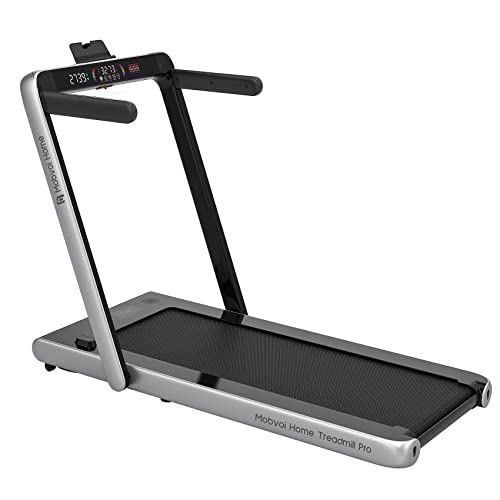The Benefits of Using a Treadmill for Walking: Your Ultimate Guide
In a period where sedentary way of lives have actually ended up being more common, discovering methods to incorporate physical activity can significantly benefit overall health. Walking, considered one of the most accessible types of workout, offers a myriad of health benefits. Integrating this with a treadmill can make it even easier for people to preserve a routine walking routine, regardless of the weather outside. This post will explore the advantages of utilizing a treadmill for walking, compare various types, and respond to some frequently asked concerns-- all meant to help readers make notified choices.
The Advantages of Walking on a Treadmill
1. Convenience and Accessibility
One of the greatest advantages of a treadmill is the convenience it provides. With one in your house, there is no requirement to venture out in severe weather condition or find a safe walking route.
2. Controlled Environment
Treadmills provide a regulated walking environment that permits users to set their pace, incline, and duration. This guarantees a tailored workout that satisfies specific fitness goals and requirements.
3. Low-Impact Exercise
Compared to running or running, walking is a low-impact exercise that is easier on the joints. Treadmills often have actually cushioned belts to further decrease impact tension.
4. Health Benefits
Walking has many health advantages, including improved cardiovascular health, enhanced state of mind, better weight management, and increased longevity. Integrating regular walking on a treadmill can amplify these benefits.
5. Multi-tasking Opportunities
While walking on a treadmill, it's possible to participate in other activities such as reading, viewing tv, or listening to music. This makes workouts more pleasurable and can encourage consistency.
6. Risk Removal
Utilizing a treadmill eliminates threats related to outside walking, such as irregular surface, traffic, and other environmental threats.
Kinds of Treadmills: A Comparison Table
Selecting the right treadmill can significantly affect the walking experience. Below is a contrast table of numerous types:
| Treadmill Type | Description | Pros | Cons |
|---|---|---|---|
| Manual Treadmills | Needs physical effort to move the belt. | Typically less expensive; no electricity required. | No automatic incline or speed changes. |
| Electric Treadmills | Powered by electricity; adjustable speeds and slopes. | Versatile; simple to utilize; typically includes additional functions. | Can be more costly; requires an outlet. |
| Folding Treadmills | Created for easy storage and conserving space. | Space-efficient; hassle-free for home usage. | Might have a smaller sized running surface. |
| Industrial Treadmills | Much heavier, built for regular use in gyms. | Resilient; often packed with functions and programs. | Can be extremely expensive. |
How to Get Started with Walking on a Treadmill
If you're brand-new to walking on a treadmill, think about the following actions to create a safe and efficient routine:
Step 1: Set Your Goals
Determine your walking goals, whether they are weight-loss, improved endurance, or merely an increased daily activity level.
Action 2: Learn the Controls
Acquaint yourself with the treadmill's control board. Understand how to adjust speed, incline, and how to utilize any additional features it might have (heart rate display, exercise programs, etc).
Action 3: Warm-Up
Start each walking session with a 5-minute warm-up at a slower rate to prevent injury.
Step 4: Start Slow
Begin with low-intensity walking sessions 2 to 3 times a week, gradually increasing your period and strength.
Step 5: Incorporate Incline
As your fitness enhances, think about including an incline into your regular to increase intensity and work various muscle groups.
Action 6: Cool Down
Conclude your workout with a 5-minute cool-down at a slower pace to assist your body recover.
Regularly Asked Questions (FAQs)
1. For how long should I walk on a treadmill for health advantages?
The CDC advises a minimum of 150 minutes of moderate aerobic activity, like brisk walking, weekly. This equates to about 30 minutes a day, five times a week.
2. Is walking on a treadmill much better than walking outdoors?
Both offer advantages, but a treadmill permits a regulated environment, which might suit some individuals better, specifically in differing climate condition.
3. Can I reduce weight by walking on a treadmill?
Yes, walking can add to weight-loss when combined with a healthy diet. It's vital to preserve consistency and gradually increase strength.
4. What speed should I stroll on a treadmill?
For newbies, a speed of 3-4 miles per hour is thought about a vigorous walk. As endurance improves, people can adjust their speed according to their fitness goals.
5. How can I remain encouraged while walking on a treadmill?
Listening to music, watching television programs, and even signing up with virtual walking neighborhoods can help keep inspiration levels high.
Including a treadmill into a walking regimen can supply tremendous benefits, making exercise available and effective. With various kinds of treadmills readily available, people can choose one that best fits their needs and preferences. By setting reasonable goals and planning out regular exercises, users can experience the myriad health benefits that come with walking. Keep in mind to listen to your body, consider a mix of slopes and speeds, and most notably, take pleasure in the process. Walking on Home Treadmills is not simply exercise; it's an action towards a healthier lifestyle.

